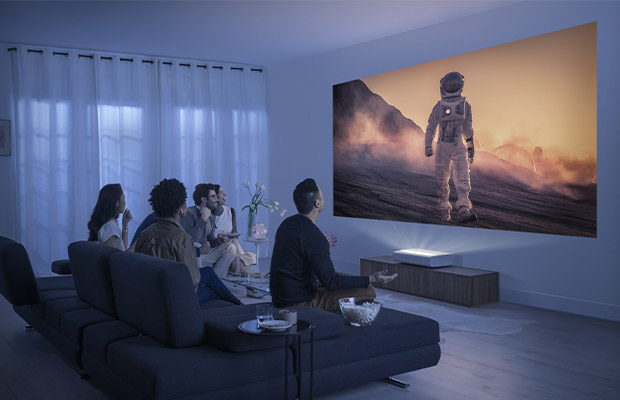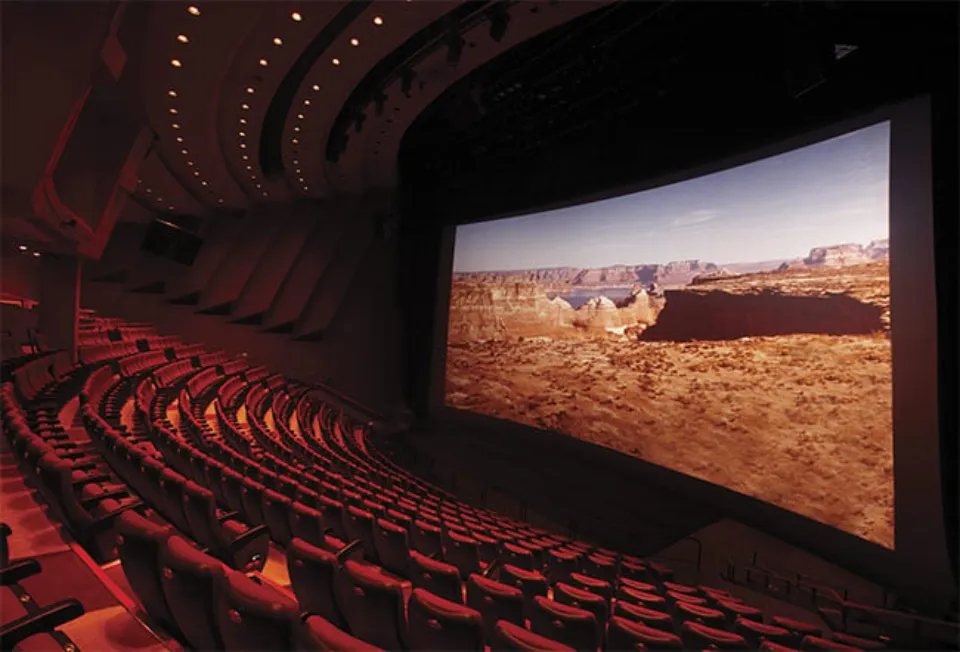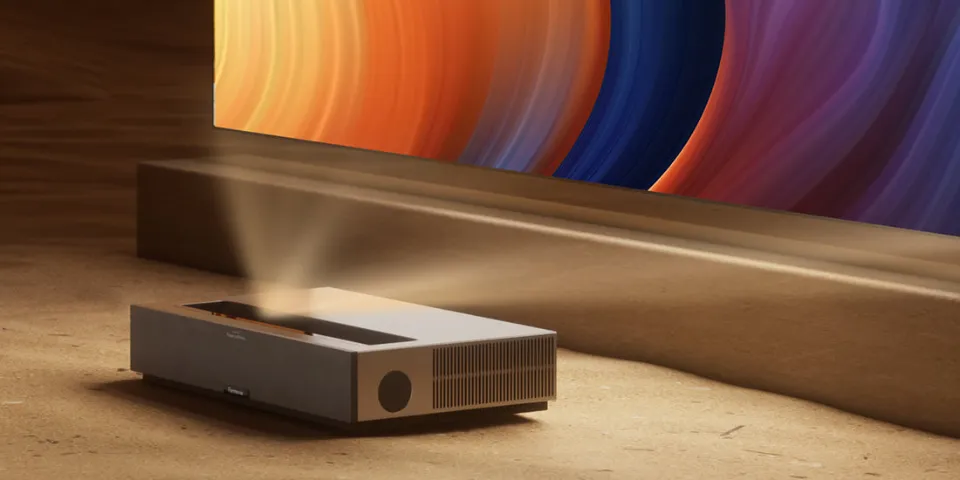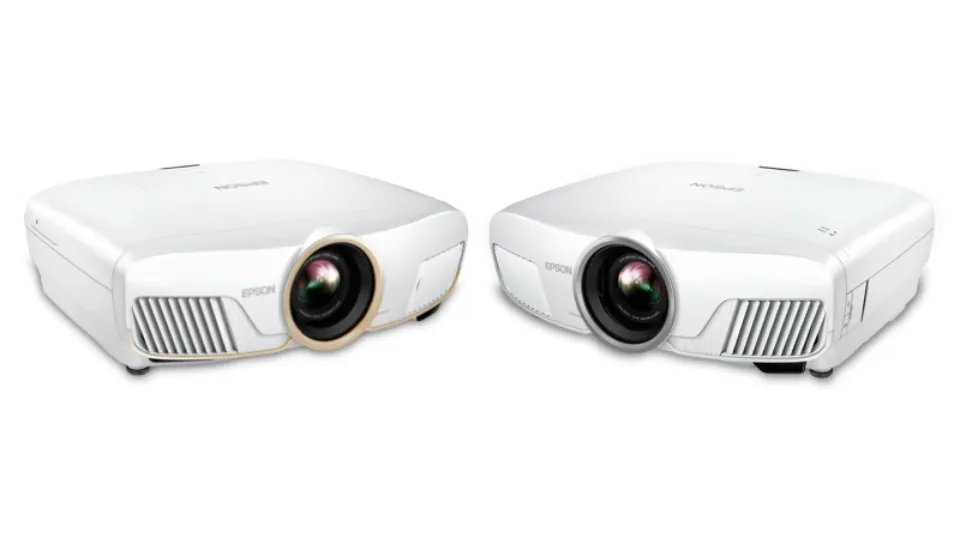How do laser projectors work? In order to produce high-quality projections, the laser projector also uses mirrors. One or more lines or shapes are projected with the laser light by rapidly rotating these mirrors.
Understanding laser projectors is simple once you have a foundational understanding of how projectors operate. Understanding the differences between laser projectors and conventional white light projectors helps explain why laser projectors are more effective but also more expensive. Many people believe that laser projector benefits outweigh their costs.
Table of Contents
What Is An Industrial Laser Projector?
A visual aid known as an industrial laser projector is employed in many different industries to position and instruct workers in a variety of processes. Typically, using a laser projector results in time and material savings. This is a result of the unmatched precision of laser technology helping to prevent positioning and alignment errors.
With a resolution of 0.1 mm per meter, the laser projector is ideally suited for quality checks. Examining weld seams or the radius of a bent object are two examples.
The positioning projection demonstrates to the user precisely where certain actions should be taken, such as where to apply a material or which tool to use when. For a process to always proceed correctly, the projector can also project multiple projections in a predetermined order. As a result, you are aware of the actions that have already been taken and how well they were completed. As a result, there is a smaller chance of error, which not only saves time and resources but also money.
How Do Laser Projectors Work?
Along with a laser, the laser projector also uses mirrors to produce high-quality projections. One or more lines or shapes are projected with the laser light by rotating these mirrors at a high frequency.
Simple 2D shapes like circles and lines can be used for this, as well as 3D shapes. The laser projector can create any projection on any surface by loading digital drawings. Additionally, a PLC can be used to connect the projector to and issue projection commands.
Returning to the laser in the laser projector, this is a diode that generates laser light with a laser class of 2M or 3R (learn more about laser classes and laser safety). Due to how quickly people close their eyes after being exposed to laser light, class 2M laser light is (eye) safe. Reflections shouldn’t be thought of as dangerous under normal circumstances, but direct radiation into the eyes is dangerous with the 3R Class. The laser projector’s built-in security prevents users and people nearby from looking directly into the laser.
Related Reading: How Does a Projector Work?

Different Types Of Laser Projectors
Let’s look at the various types of laser projectors now that you understand the fundamentals of how laser projectors operate using laser projection technology.
There are mainly four types of laser projectors:
1. RGB Laser Projector
The most prevalent kind of laser projector is an RGB model. To create the image, they combine red, green, and blue light. A wide range of colors can be produced by this kind of projector, which makes it perfect for use in home theaters or other multimedia applications.
These are also known as industrial laser projectors due to their excellent performance. When we refer to an industrial laser projector, we mean one with excellent visuals and sturdy construction.
2. RGBY Laser Projector
While RGB laser projectors only use red, green, and blue lasers, RGBY laser projectors also use a yellow laser (or yellow light). The projector is brighter than an RGB projector thanks to the addition of this laser’s additional light. Large venues like arenas for sports or concerts frequently employ RGBY projectors.
3. Monochrome Laser Projector
A single color laser is used to create the image in monochrome laser projectors. While less common than RGB or RGBY projectors, these are typically less expensive. Monochrome projectors are frequently used in business and educational settings.
4. Mini Laser Projector
A portable projector type that uses a laser to create images are called mini laser projectors. These projectors are portable because they are compact and light. For use in home theater applications or business presentations, mini laser projectors are typically preferred. The light emitted by a mini laser projector is not excessively bright or wide-ranging.
Pros & Cons Of Laser Projectors
Although upgrading to a laser projector has benefits, not everyone should do so. A laser projector is more durable and uses less energy than a regular projector.
However, a laser projector will be heavier and larger than a standard projector, so using it outside on occasion will be more difficult with one. Additionally, if you plan to use a projector outside, make sure it is bright enough because, as we explained in our guide, its brightness must compete with the sun. Here are some advantages and disadvantages to watch out for.
Pros
Energy Efficiency – Laser projectors have the distinct advantage of only producing the light that is required, thereby wasting less energy on producing light that will be filtered out. Furthermore, less light is lost in transit because laser light is unidirectional. All things considered, this results in less power usage, brighter images, and a cool projector.
Start-Up – A laser projector turns on almost instantly and has a start-up time similar to that of a regular television. Unlike a projector of the old school, there is no warm-up period.
Lifespan – A laser projector has an expected lifespan of around 20,000 hours, ten times longer than the typical projector lamp’s 2,000 hours. Because it can be difficult to tell when a laser projector is about to fail, we’ve previously written a guide on the subject. When compared to a conventional model where the bulb needs to be changed, this frequently means that the projector’s higher initial cost is recovered over its lifespan.
Cons
Cost – The price of a laser projector is one barrier. You can count on spending at least $1000 if you choose to purchase a laser projector. Up to ten times as expensive as standard projectors are laser projectors. Additionally, the price is typically a little higher if you need a short-throw projector, such as the LG HF85LA Ultra Short Throw Laser Projector (on Amazon).
Size – The size and weight of laser projectors is yet another disadvantage. If you use your projector in multiple locations, this will make them more difficult to move. Furthermore, the projector will be able to be placed in fewer locations.
How A Laser Projector Is Different?
The white light bulb is replaced by primary-colored lasers in a laser project. A series of lenses then magnify and focus this light after it has been diffused, struck a chip, and hit a chip. Red, green, and blue lasers are used in the ideal system. True RGB models, however, are very expensive. Customers can more frequently find hybrid laser models that make use of blue laser light.
Three lasers are replaced by one laser in the hybrid models. This laser emits two beams of light, one of which is changed into either green or yellow light. The combination of these three light beams creates a lens and prism assembly that directs the light onto a DLP, LCD, or LCoS chip before passing it through lenses to focus and magnify it.
Other designs pair a blue laser with a red LED, and they use a phosphor to turn the blue laser’s light into green light. Light is wasted less in every situation. Only the necessary light is produced, and since laser beams are directed in a single direction, no light is lost in transit.
It follows that less energy is required to create the same image. This results in less heat being produced as well as less wasted electricity. Additionally, because they don’t require warming up before use, lasers are more durable than conventional lamp bulbs.
Laser Projector Applications
The applications for laser projectors from various industries are listed below. These are by no means all the uses for laser projectors, but they give a good idea of their versatility.
Laser Projection In The Textile Industry
The laser projector is useful for tasks like cutting, sewing, and embroidering fabrics. Our textile and leather projection lasers streamline operations, boost output, and enhance product quality. Leather cannot automatically nest when patterns are cut from it with a cutter, unlike other fabrics. This is due to the fact that leather is a natural product and frequently has flaws. Consider a scar the animal may have acquired over the course of its life, but even something as minor as a mosquito bite can cause an irregularity. One or more laser projectors display the designs on the leather skins for the best material yield. When an unevenness falls on the projected pattern, the projection is placed in an “error-free” zone in advance and the cutter uses its new coordinates. In this manner, a piece of leather will always yield its maximum yield.
Laser Projections In The Production Of Stairs
Due to the minimal waste produced by using laser projectors, material costs are reduced. This is so that the steps that need to be milled can be perfectly matched to the wood grain by the laser projection and the specialized software. This greatly reduces time wasted and quickens work.
As an example, consider the projection that acts as a temporary marker for the stair step cutouts on a stair rope. The vacuum cilinders can also be correctly positioned in relation to the rope using the laser projector. In this manner, the milling machine’s damage to the vacuum cilinders is avoided.
Laser Projection In The Metal Industry
The metal industry can benefit from the laser projector as well. Examples include the inspection of bent metal pieces or the boring of points during welding. The laser projector can be used to project one or more welding positions for the metal pieces.
The projection is crystal clear and precise, so all that is required before welding is setting the metal pieces in the proper location. It is no longer necessary to measure the position of the metal pieces before and after welding because the projections are displayed on the appropriate scale. The product quality improves as a result of the significant time savings and decreased margin of error.
Laser Projection In The Wood Industry
For applications in the wood industry where work pieces must line up with sawing lines, thread mills, or boring heads, laser light is a great choice. Even with glue and nail binders, laser projections produce very accurate results. For roof trusses, the laser projector projects the design files at the appropriate scale onto the processing material surface. The wooden planks, nail plates, and pressing blocks are projected in their exact locations.
What Is The Lifetime Of A Laser Projector?
When talking about a laser projector’s lifespan, we actually mean the lifespan of the projector itself. That is to say, in contrast to standard projector lamp bulbs, lasers in a laser projector are not made to be changed.
We aren’t really comparing like with like when we compare the 2,000-hour lifespan of a standard projector to the 20,000-hour lifespan of a laser projector. A standard projector’s lifespan can be increased for a small fee by changing the lamp bulb. A laser projector, however, cannot be revived once it has died. 20,000 hours, though, is the equivalent of 6.8 years of 8 hour days straight.
Are Laser Projectors Safe?
Although some lasers can burn objects when they are intensely concentrated (much like regular light can with a magnifying glass), laser light from a projector cannot do this. Not only are lasers incapable of doing this on their own, but the projector also diffuses the light, further reducing the intensity of the beam.
Your vision could be harmed by lasers, which is another risk. There is a widespread misconception that laser light will cause you to lose your vision, similar to the notion that lasers will burn everything. If you have a powerful laser, you could potentially make yourself blind from the laser light.
However, the majority of consumer-grade lasers on the market—including the projector’s lasers—can only blind people under very specific conditions. Additionally, the laser light is diluted before it leaves your projector, lessening its potential for harm. However, staring into any light directly is bad for your eyes.
Are Laser Projectors Worthwhile?
There are many considerations to make when deciding whether or not to use a conventional projector. These elements include the price of the projector, the bulb’s lifespan, and overall brightness. The most practical choice for you may be a conventional projector if you’re on a tight budget.
A laser projector is a wise investment no matter how you look at it. The typical laser projector has a lifespan of about 12 years, even under heavy use. You should likely think about a laser projector if you want a projector for the long term.
Read Next: How Do Projector Headlights Work?




